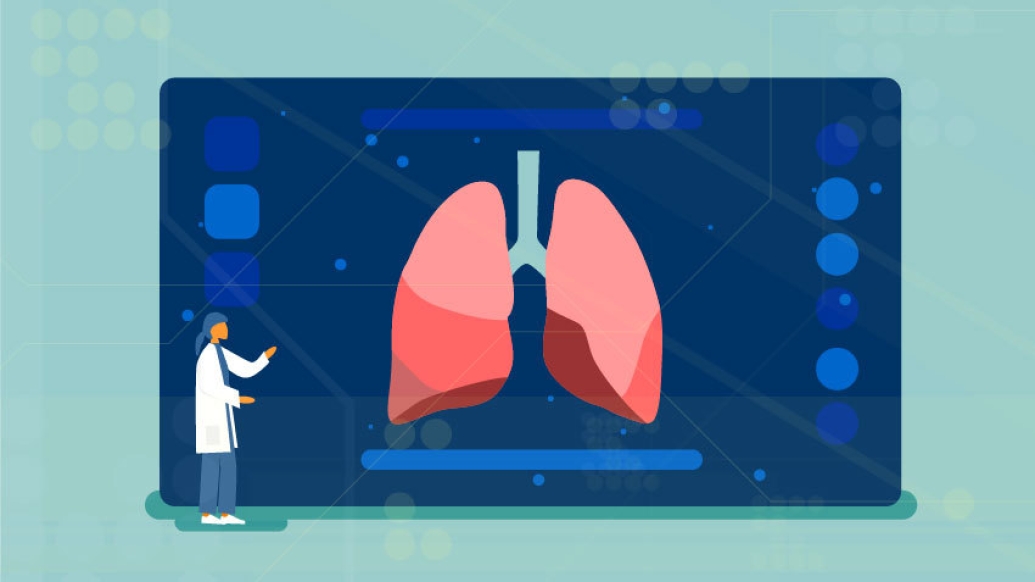A Rogel Cancer Center lung doctor discusses recommendations that annual screenings start at age 50 for current and former smokers with 20 “pack years”.
10:56 AM
Authors |

This story was updated on March 10, 2021.
A federal advisory group is recommending that annual lung cancer screenings start earlier and encompass people with more moderate smoking histories. The changes will essentially double the number people eligible for screenings nationwide — capturing more women and Black patients in particular.
The U.S. Preventive Services Task Force is recommending annual low-radiation CT scans for:
-
Adults aged 50-80 who have a smoked an average of a pack a day for 20 years, and who currently smoke or who have quit smoking within the last 15 years
-
Previously, annual scans were recommended for smokers with 30 "pack years" starting at age 55.
To better understand the thinking behind the recommendations and what they may mean for patients, the Michigan Health blog sat down with Douglas Arenberg, M.D., who heads the lung cancer screening program at the U-M Rogel Cancer Center.
"Lung cancer is the leading cause of cancer death in the U.S., with an average five-year survival rate of around 20%," Arenberg says. "And, like with most cancers, we know that we can achieve better outcomes for patients when lung cancer is detected at earlier stages."
This year, almost 236,000 Americans will be diagnosed with lung cancer and nearly 132,000 people will die of it, according to the American Cancer Society. Smoking is the largest risk factor — with smokers being 20 times more likely to develop the disease.
The screening recommendations were last updated in 2013 and new evidence has emerged since then, Arenberg notes.
Some of the key new data comes from a large scale study called the NELSON trial, which found that lung cancer deaths were reduced by nearly 25% among current and former smokers through the use of regular, low-dose CT screening, he adds.
SEE ALSO: Who Should Be Screened for Lung Cancer? The Evolving Science
Compared to other types of cancer, lung cancer screening adoption has been particularly low. A 2020 American Lung Association report found only 5.7% of people at high risk get screened.
One of the challenges has been that the recommendations aren't as simple as saying that everyone should get a colonoscopy when they turn 45, Arenberg notes.
"But while the guidelines remain more complex relative to screening guidelines for other types of cancer, the changes do two important things that have the potential to improve outcomes for thousands of people: significantly expand the number of eligible individuals and, supported by new evidence, reduce some health inequities by proportionally increasing the number of at-risk women and African Americans who are eligible for screening."
Worries about additional radiation
Many people are naturally concerned that the additional radiation exposure from the additional CT scans will increase their cancer risk.
"There is a risk, but it's extremely small — a decimal point with a lot of zeros after it," Arenberg says. "For long term smokers, which is who we're talking about, the theoretical risk from the tests is miniscule compared to the well-established risk of developing lung cancer."
The primary risk from increased screening actually comes from false positives, he adds.
Like with most cancers, we know that we can achieve better outcomes for patients when lung cancer is detected at earlier stages.Douglas Arenberg, M.D.
"Unfortunately, there's no blood test or biomarker that's going to tell us if a suspicious spot on the lungs is benign or cancer," Arenberg says. "We sometimes have to do a biopsy to know for sure. And any time you are doing an invasive procedure on the lungs there is a small potential risk of complications."
Ever-improving imaging technology, however, is making it easier for doctors to monitor and evaluate suspicious lumps in a non-invasive manner — confirming, for example, if they are growing too slowly (or even too quickly) to likely be cancer, Arenberg notes.
With any type of cancer screening, the benefits must greatly outweigh the possible harms, he adds.
"The data the task force reviewed in making these recommendations suggest that expanding annual lung screenings could potentially help us catch a significant number of lung cancers at earlier stages, when they're easier to treat," Arenberg says.
Addressing disparities
Screening for lung cancer in those with lighter smoking histories and at an earlier age may also help improve racial disparities in screening eligibility, the task force notes. And because women also tend to smoke fewer cigarettes than men, women would make up a greater percentage of those the expanded guidelines would apply to.
Additionally, African Americans, especially those with more moderate smoking histories, are at higher risk than their white peers of developing lung cancer, the task force points out, though the reasons for the difference aren't entirely clear.
"So, the hope is that by lowering the age threshold and adding people with fewer pack years, there is also an opportunity to improve some of the racial disparities that are seen in lung cancer," Arenberg says.
Doctors talk about smoking history in terms of "pack years" — that is, smoking, on average, a pack of cigarettes a day for a year. It can also apply to those who smoke more over a shorter period of time (for example, two packs a day for half a year), or who smoke less for longer (half a pack a day for two years).

Explore a variety of healthcare news & stories by visiting the Health Lab home page for more articles.

Department of Communication at Michigan Medicine
Want top health & research news weekly? Sign up for Health Lab’s newsletters today!





